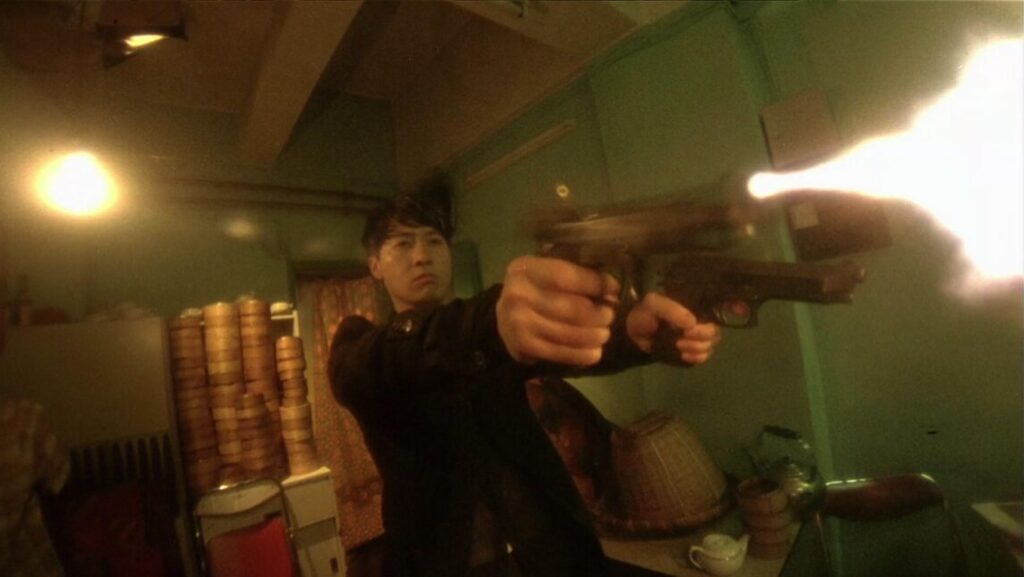Rarely has a film’s meaning been so contingent on purposefully disconcerting stylistic contrivances. In Fallen Angels, Wong Kar-wai and his longtime cinematographer Christopher Doyle use their collaborative efforts to create an urban environment that feels at once hermetically sealed and overwhelmingly expansive. Not just a mere portrayal of the Hong Kong cityscape, however, the film follows the tangentially connected stories of two sets of “partners,” both pairs weaving in and out of each other’s lives while somewhat routinely going about their business. The nature of these relationships — whether romantic or business or both — is occasionally unclear. But considering the psychedelic nature of his aesthetic choices, this lack of narrative clarity appears to be exactly what Wong was aiming for. The ephemerality of human interaction is the thematic center of his Fallen Angels, and it’s manifested through an exhausting visual bombardment. Nearly every shot is either an extreme close-up, filtered through an ever-changing color palette, or distorted in a variety of funhouse mirror ways, with virtually none of Wong’s signature cool, calm collectedness. It’s a bold vision, one that seems the product of youthful imagination and ambition — but as undeniably unique as it is, it’s frankly not much fun to watch.
Nearly every shot is either an extreme close-up, filtered through an ever-changing color palette, or distorted in a variety of funhouse mirror ways, with virtually none of Wong’s signature cool, calm collectedness.
Because of the way Wong intentionally obscures normal ways of seeing, the viewer is forced to do a bit too much guesswork as to who these people are and why they are acting the ways they do. Such a quest for understanding can often be an engaging way to pull an audience in, but in Fallen Angels, that quest becomes too exhausting without any reprieve from the punishingly bombastic environment Wong creates. That’s not to suggest that there’s absolutely no method to the madness; these are “fallen angels,” after all. The hedonistic characters Wong follows have little to stabilize them, and his choice to depict them through unflattering filters and askew setups succeeds insofar as it’s a visually appropriate way to contextualize them. Instead of maintaining the viewer’s interest in these characters, however, these people feel more like cartoon mice spinning an elaborately constructed circus wheel, their interactions with each other made frequently nonsensical by the incessantly hyperbolic style. To be sure, there are a number of fantastic moments throughout; if anything, the style is so unique that each individual sequence could potentially be cited as a highlight. This is particularly evident in the film’s finale, a lengthy motorcycle ride, captured in another extreme close-up, only this time the shot is afforded the attention it deserves rather than being rushed. Strung all together, Fallen Angels is overwhelming, but individual parts stand out. Even at less than peak form, Wong is incapable of crafting anything less than fascinating cinema.
Part of Kicking the Canon – The Film Canon.


Comments are closed.